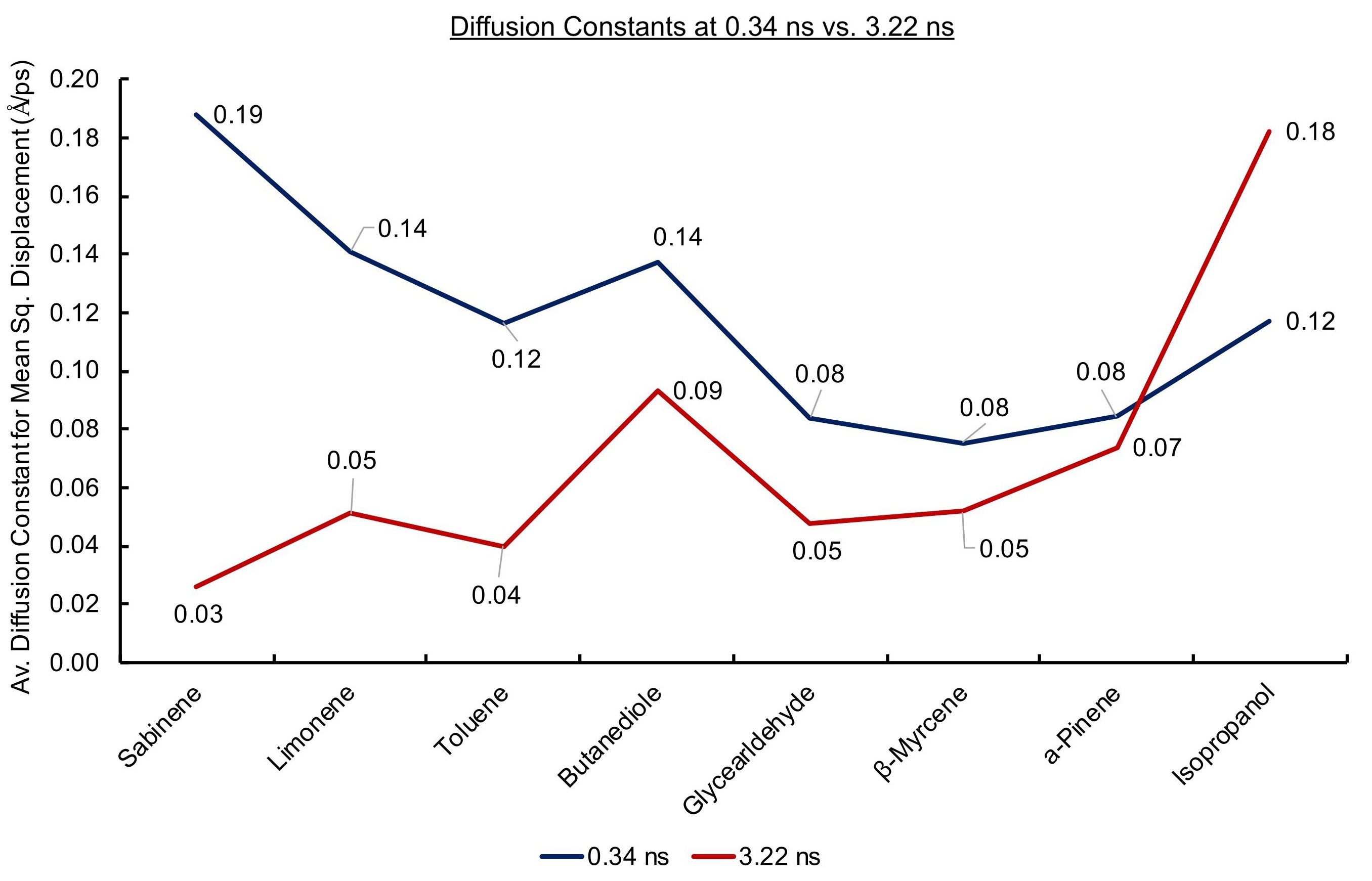News
Molecular Dynamics and SDSC’s Comet Sniff Out Insights on Odor Neutralizers
Published July 31, 2022
Nathan Han, SDSC Research Experience for High School (<a href="https://education.sdsc.edu/studenttech/rehs/" rel="noopener" target="_blank">REHS</a>) Intern and&#160;Kimberly Mann Bruch, SDSC External Relations
Odor-producing industries and activities such as agriculture, composting, sewage management, food processing plants and landfills present a constant or seasonal nuisance to the communities that live around them—not to mention potential health concerns. To neutralize these smells, odor-producing industries occasionally purchase and discharge odor neutralizers to help mask the smells. The production, purchase and application of these odor neutralizers might not always depend on cost-effective scientific approaches being employed to identify the appropriate mix of odor neutralizers for the given odor being masked.
A group of researchers based in Louisiana, including Edwin Gomez, Richard Mayer, Laura Eschette Becker and Sylvester Tumusiime, recently used Comet at the San Diego Supercomputer Center at UC San Diego to examine how a given mix of odor neutralizers works to counteract emitted odors. Their results are reported in a paper, titled Using Molecular Dynamics to Assess the Mode of Odor Neutralization by Typical Odor Neutralizers, which was recently published in the open-source Academia Letters journal.
To assess how odor neutralizers work to reduce the effects of common odors associated with landfills and other key odor sources, the team applied molecular dynamics (MD). Using the AMBER molecular dynamics software tool, which helps researchers simulate the diffusion and dispersion of frequently used components, the team neutralized the odor of toluene—a colorless liquid with a sweet smell and taste found in crude oil and used in paints, glues and more.
“Our preliminary study shows how supercomputers and molecular dynamics techniques enable cost-effective analysis of important societal/environmental issues that impact the daily lives of ordinary people,” said Louisiana Public Health Institute Informatics Manager Tumusiime. “Without access to SDSC resources, we never would have been able to perform this work.”

This Comet-generated chart shows how odor and fragrance molecules move at different speeds depending on the time of release. Credit: S. Tumusiime.
From their initial analyses, the researchers reported that their simulations indicate that different components found in odor neutralizers move about the atmosphere faster than others. This difference in speed of movement could result in an odor neutralizer that works effectively over both short and long periods of time, which presents the possibility of more effective management of the effects of the odor.
“The computing resources that Extreme Science and Engineering Discovery Environment (XSEDE) granted to this study demonstrated that molecular dynamics could be a cost-effective means for testing the composition of candidate odor neutralizers prior to embarking on expensive industrial phases,” said Tumusiime.
The time on Comet was provided by XSEDE allocation number TG-ATM170012.

